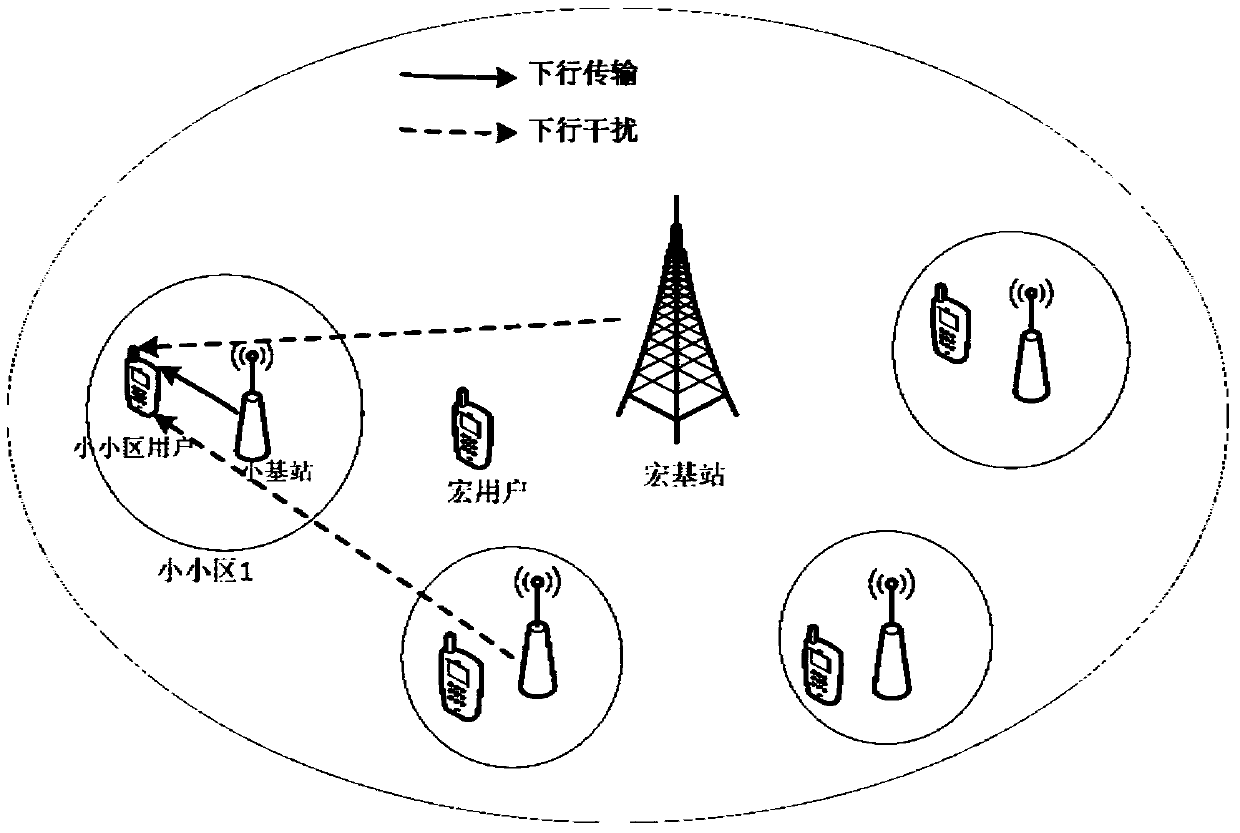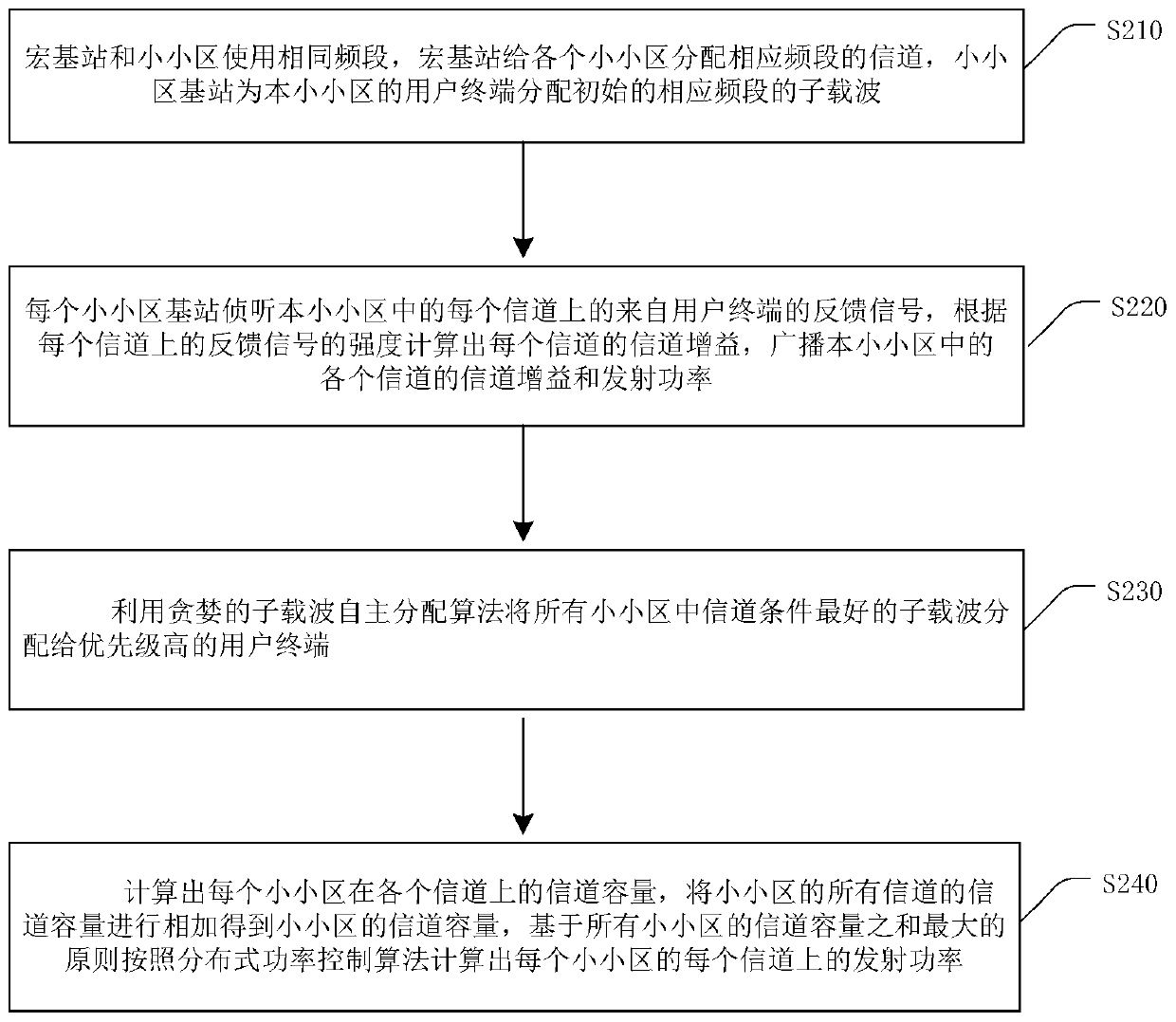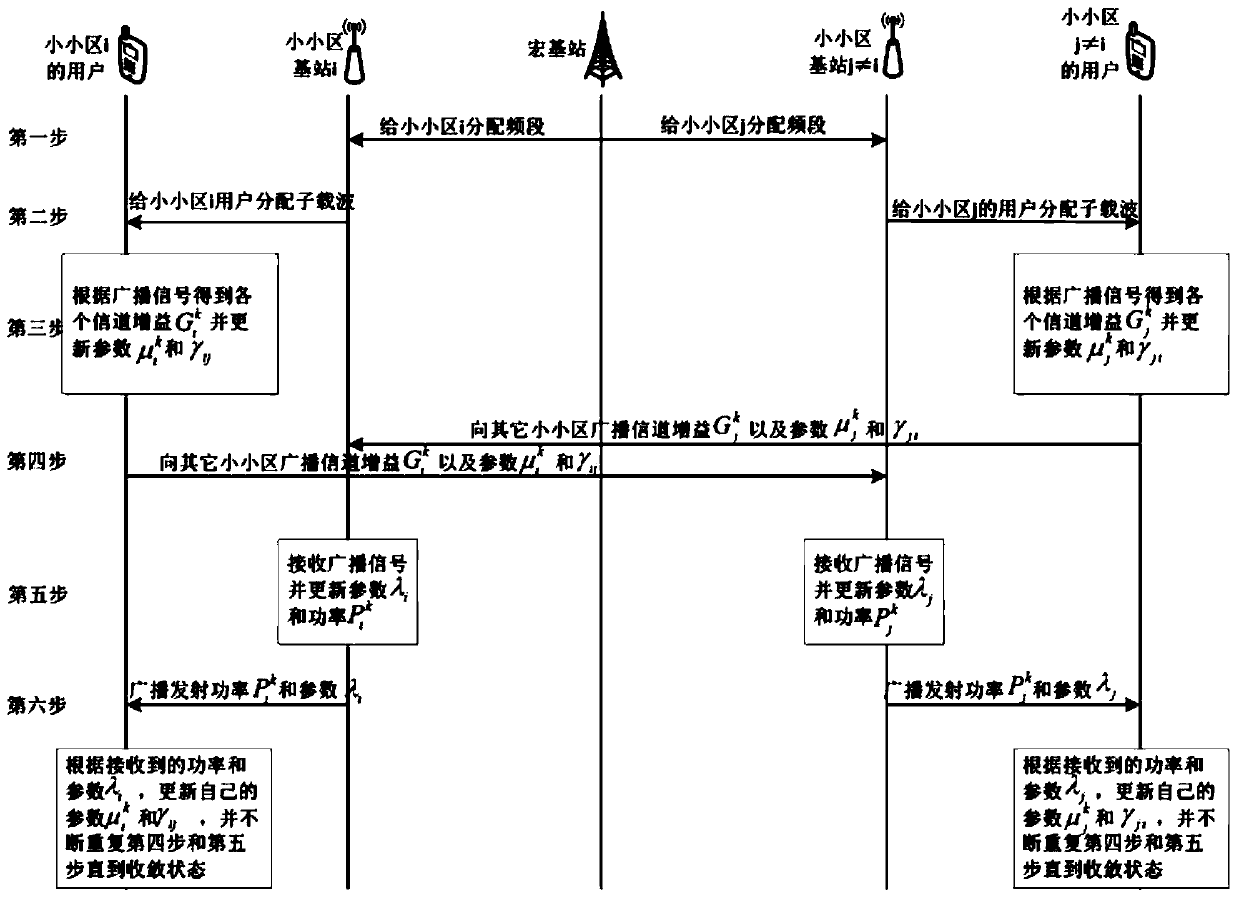Wireless resource allocation method in ultra-dense small cell network system
A network system and wireless resource technology, applied in the field of wireless resource allocation in ultra-dense small cell network systems, can solve problems such as high computational complexity, inability to adapt to an increasingly flat network structure, and heavy burdens on macro base stations
- Summary
- Abstract
- Description
- Claims
- Application Information
AI Technical Summary
Problems solved by technology
Method used
Image
Examples
Embodiment 1
[0070] The embodiment of the present invention proposes a distributed resource allocation algorithm, so that the base stations of each small cell can allocate the wireless resources of the small cell after certain information interaction, and finally achieve the purpose of maximizing the system capacity.
[0071] In the future 5G communication, the wireless communication network is evolving in the direction of network diversification, broadband, integration and intelligence. With the popularization of various smart terminals, data traffic will experience a blowout growth. In the future, data services will be mainly distributed indoors and in hotspot areas, which makes the ultra-dense network one of the main means to realize the 1000 times traffic demand of future 5G. The ultra-dense network can improve network coverage, greatly increase system capacity, and offload services, enabling more flexible network deployment and more efficient frequency reuse. This ultra-dense network...
PUM
 Login to View More
Login to View More Abstract
Description
Claims
Application Information
 Login to View More
Login to View More - R&D
- Intellectual Property
- Life Sciences
- Materials
- Tech Scout
- Unparalleled Data Quality
- Higher Quality Content
- 60% Fewer Hallucinations
Browse by: Latest US Patents, China's latest patents, Technical Efficacy Thesaurus, Application Domain, Technology Topic, Popular Technical Reports.
© 2025 PatSnap. All rights reserved.Legal|Privacy policy|Modern Slavery Act Transparency Statement|Sitemap|About US| Contact US: help@patsnap.com



